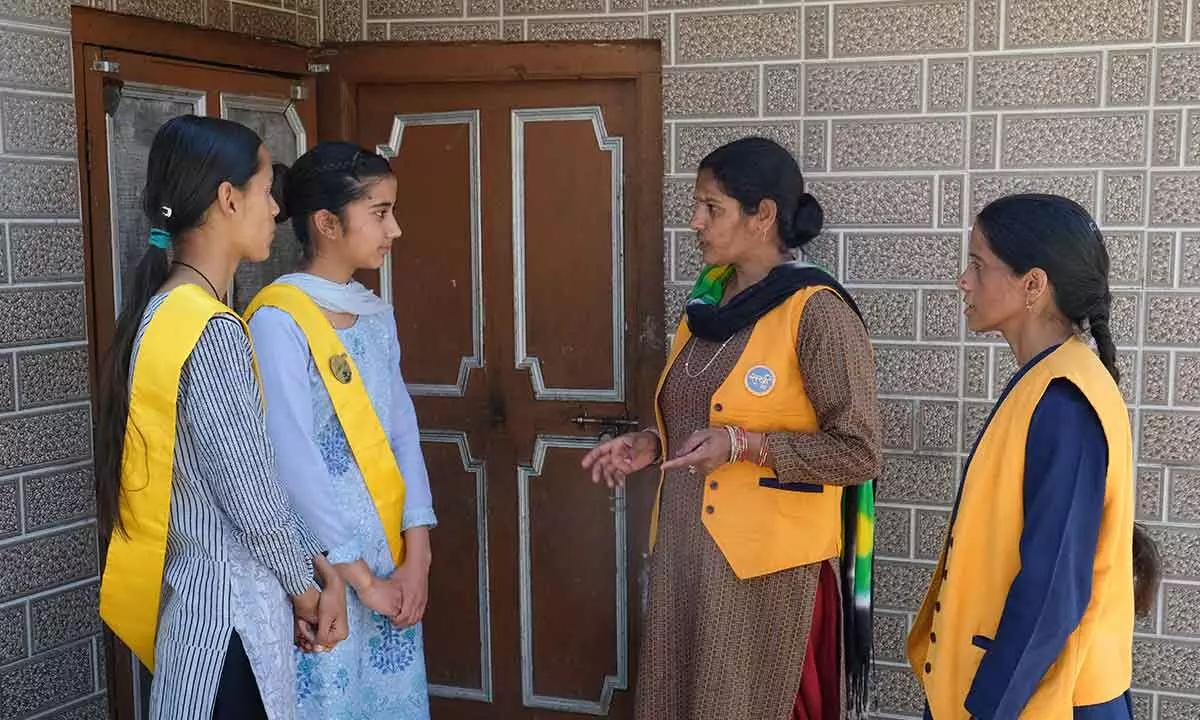Live
- Polling concludes in Maharashtra and Jharkhand Assembly elections
- Chhattisgarh CM Sai briefs HM Amit Shah on progress in Maoist-affected areas
- Bengal PDS case: ED seeks report on medical conditions of jailed former minister
- Siddharth's Romantic Drama Miss You Set to Hit Theaters on November 29
- India’s 1st AI data bank to boost national security launched
- Humbled to receive 'Key to the City of Georgetown', says PM Modi in Guyana
- 11 lakh BPL cards revoked, claims K’taka BJP
- Exit polls results indicated victory of the NDA government in Maharashtra and Jharkhand!
- Deputy CM Bhatti Vikramarka Reviews SC/ST Development Funds Implementation
- AP cabinet approves key decisions, check here
Just In

When we talk about women ‘role models, our minds instantly jump to prominent figures in the media – successful women in the fields of entertainment,...
When we talk about women ‘role models, our minds instantly jump to prominent figures in the media – successful women in the fields of entertainment, politics, business and social justice. But what if real ‘role models’ were from their own communities – a family member who builds a business or career; a neighbour who uses her voice and becomes a community leader; a peer who sets her sights on a goal.
It’s important because role models matter - particularly for women and girls in a country like India.Even more so for rural girls whose ‘worldview’ is relatively small and restricted to the village. Female role models – particularly within the family, or community - are needed to show them what's possible. Needed to inspire future generations and help foster aspirations.
Inspiring peers to pursue training
When 21yearold Leena Sahu first joined a vocational training course, she was the only person from her village, HathbandhBhatapara, Chhattisgarh to do so. Despite being undermined in the community, after just 3 months training in Retail Management, Leena scored a dynamic job at Westside in Raipur as a retail assistant - earning Rs.12, 000 per month.
People in the community were shocked:“How did you get the job?" Not holding any grudges, Leena opened up about her training and shared her experience. Gradually, people from the village started to sign up for training.
Pursuing a variety of trades, 5, then 10, then 20, 40 and eventually 60 young people especially girls followed suit - one by one following in Leena's brave footsteps and moving forward towards developing a career.
Similarly, in Inaj village in Veraval, Gir Somnath Gujarat, 15 young girls have become the primary breadwinners of their families, having trained in the male dominated field of electronics.
And it is all because of Kiran Ram, who withstood family and community pressure to pursue a male dominated trade. On completing her 12th Standard at school, she could see no viable career path for herself in the small community she grew up in. One day there was a knock on the household door, and there stood a training institute mobiliser who shared information about skill training.
Kiran underwent a 4 monthskill training programme in PCB Assembly emerging as a powerful and confident young woman. She kickstarted her career at Elite Electronics as a PCB Assembly Operator with a monthly salary of Rs. 9500 and free accommodation. With good work etiquettes and technical skills she grew in a very short time as a Supervisor with a salary of Rs. 14,000 per month.
Role models – backed by research
Research highlights that role models have an amplified benefit for women and girls due to the gender biases, institutional barriers and negative stereotypes.
When it comes to the rural context in India, having a working mother, elder sibling or woman in the neighbourhood, creates roadways and aspirations for young girls. For many girls, role models show them what’s possible, help bridge the gap and open up a world of possibilities. They help young girls think ‘Why not me?’
‘Working women’are a relatively new and emerging phenomena, especially in rural India. Women are still grappling with a lack of resources and sanctions to pursuehigher education or skill based courses - especially if these are non-traditional roles for women. So when a woman or girl makes it happen, goes against all the odds and paves the path,it creates the models of negotiations, navigations and possibilities for other young women and girls around her.
Role models have proven toprovide three core benefits to young girls – they represent and expand what is possible; they inspire girls to be more ambitious and aim higher; and they demonstrate the mindsets and behaviours of ‘how to rise!’ In fact, astudy across 29 countries found that daughters whose mothers were pursuing careers were 1.21 times more likely to have higher annual earnings.
Community Leaders Too, Are Role Models
By fostering women leaders, the overall women's agenda across communities is elevated and pushed forward - transforming the lives of thousands of women who are impacted by the initiatives and policies they pursue.
Chanda Tai, from Hardona Village in Chandrapur, Maharashtra is one such leader who rose from being a housewife andmere SHG member, to becoming the Secretary of the Ekta Women's Federation and role model to thousands of women across 30 villages. She influenced women via a Rs. 57 lakh seed and compost business; helped tackle sanitation by creating ODF villages in partnership with a leading bank; and worked to make her village a SMART village.
“Today, my daughters are working and have good jobs and I am determined to continue to be an inspiration for them. Similarly, other women have gained trust in me – they are kickstarting animal husbandry businesses, promoting community sanitation and are returning loans on time,” said Chanda Tai.
(The author is Director and CEO, Ambuja Foundation)

© 2024 Hyderabad Media House Limited/The Hans India. All rights reserved. Powered by hocalwire.com







